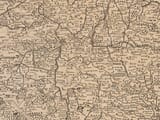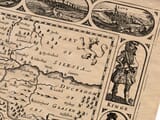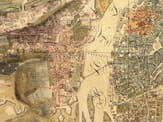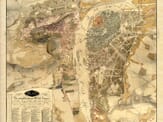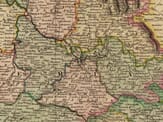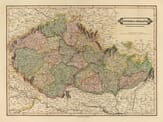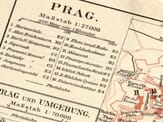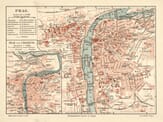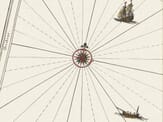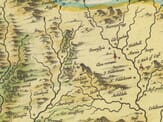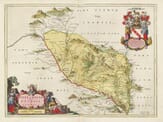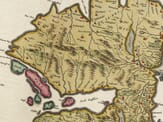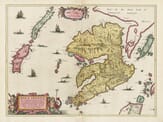Description
John Speed added notes to the reverse of his maps.
The Description of the Kingdom of Bohemia
Translated into Modern English
(1) In our description of Germany, we included Bohemia as a province among the rest. But since it was mentioned more for its connection to other regions rather than its own merit, we now declare it a kingdom in its own right, with its own rulers (Dukes and Marquises), and a defined boundary often outlined by geographers. It has its own subjects and statehood and deserves fuller description.
(2) The ancient inhabitants of this place were the Boii, a great nation of Gauls, mentioned by Plutarch. They settled between the Alps and Danube, and were driven out by the Romans, after which they migrated further to the River Elbe into Germany (according to Strabo). They hid in the woods (Sylva Hercinia) and mixed with the Berni tribe. They weren’t accepted by the locals and eventually settled a country called Marcomanni. They moved again and were absorbed by the Sarmatians, a race of exiled and wandering people, settling near modern-day Croatia and Bohemia.

(3) The name “Bohemia” comes from these early settlers, the Boii. The Bohemians are the people of the Slavonian race and language, still common today. Their capital was Gorim, now ruined, but they later lived at Lethicz, about two hundred years before Zezchus (an early ruler). When the people suffered under poor leadership, they chose their own leaders and elected Crok, a wise and respected man.
(4) The title of King came after the title of Duke, and the first king was Henry the Fowler, Emperor of Germany, around the year 936. The second was Vladislaus, crowned by Emperor Frederick. The third, Ferdinand, held the crown by election and inheritance. The current ruling family were accepted as rightful kings by the Bohemians, in agreement with the Emperor.
(5) In 1399, Sigismund, Emperor of the Romans, had a daughter Elizabeth, married to Frederick, Count Palatine of the Rhine. Their daughter, also named Elizabeth, married King James of England. These connections gave the English monarchy some claim to Bohemia, though the Bohemians ultimately elected their own kings.
(6) Bohemia sits in the centre of Germany, surrounded by forests and mountains. It’s around 50 leagues in breadth and 40 in length. Its boundaries are:
West: Franconia, North: Lusatia and Misnia, South: Bavaria and Austria, East: Moravia and Silesia
It’s roughly circular in shape, about 450 miles in circumference, full of fertile land, rivers, and natural beauty.
(7) The main river is the Elbe, rising in the Hercynian Forest. It meets with another river at the head, flows through Prague, and eventually into the German Ocean. Hence the saying:
“Fundat ab extremo flavus Antiquone Suevus / Albis & indomitum Rheni capit…”
(8) Other rivers:
Muldau (Moldau), Egra, Sazawa, Silesia, Misa and Vltava.
These all flow into the Elbe. They’re known for excellent salmon and gold deposits, which are found in five times the usual quantity. Some lands are full of precious metals like silver, though iron is rare. There’s also a town called Czernil, where English miners once worked. Bohemia produces good grain, and the fields feed large herds and wildlife like deer, bears, and wolves.
(9) The people are strong, proud, and ambitious, with a love of glory and fighting. They’re not seen as luxurious or weak. One story is told of Ziska, a Bohemian Captain, who fought against the Pope. When he was near death, he ordered his skin to be made into a drum, so he could continue to “lead” even after death.
(10) Religion: Bohemia had its share of reformers, most notably John Huss and Jerome of Prague, who were burned as heretics by the Council of Constance. Despite that, many in Bohemia have kept their reformist beliefs. The land still holds deep roots of Protestantism, though it has suffered from conflict and forced conversions.
(11) Lastly, Bohemia is praised as the richest kingdom in Germany, possessing great numbers of noble families and wealthy people.



